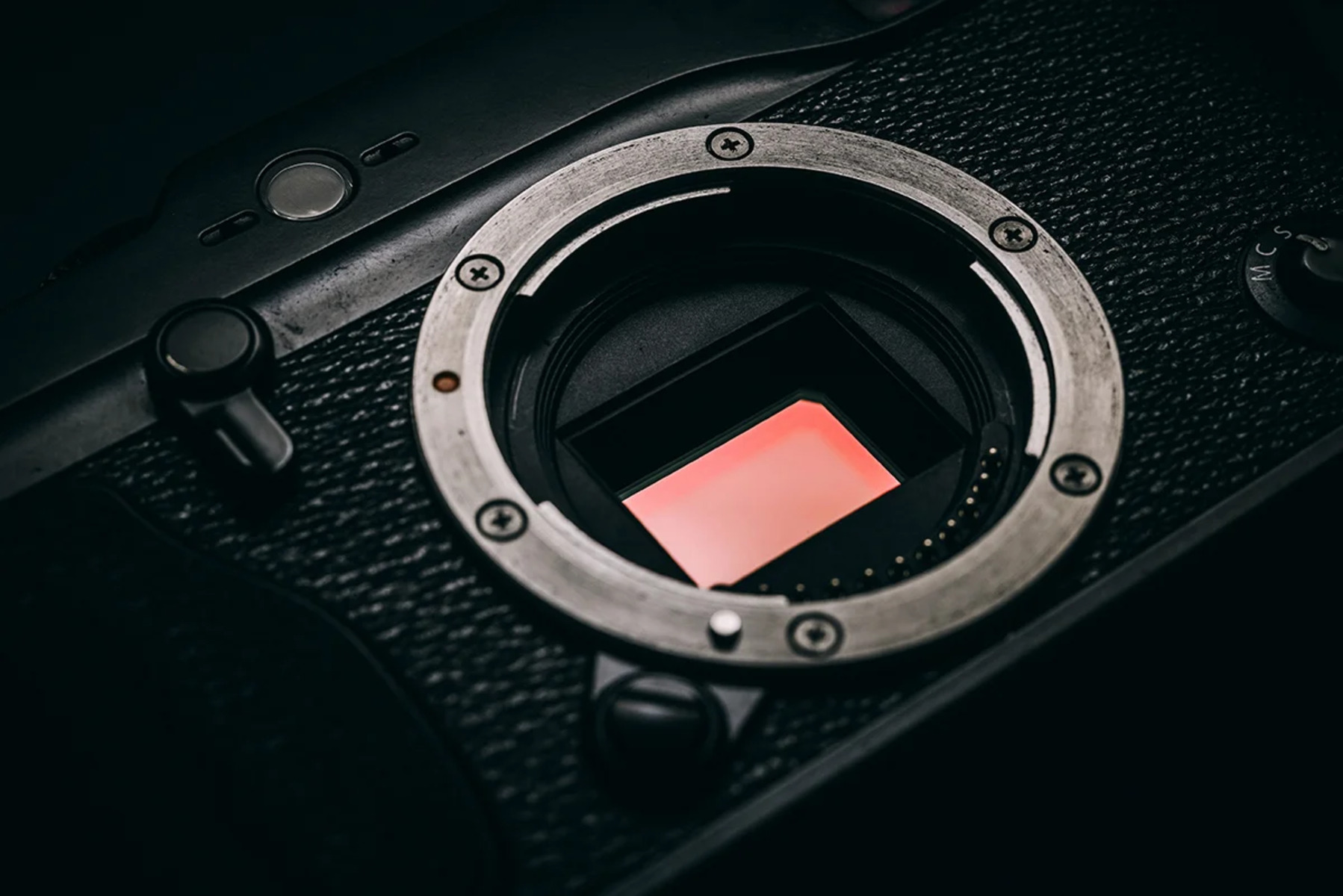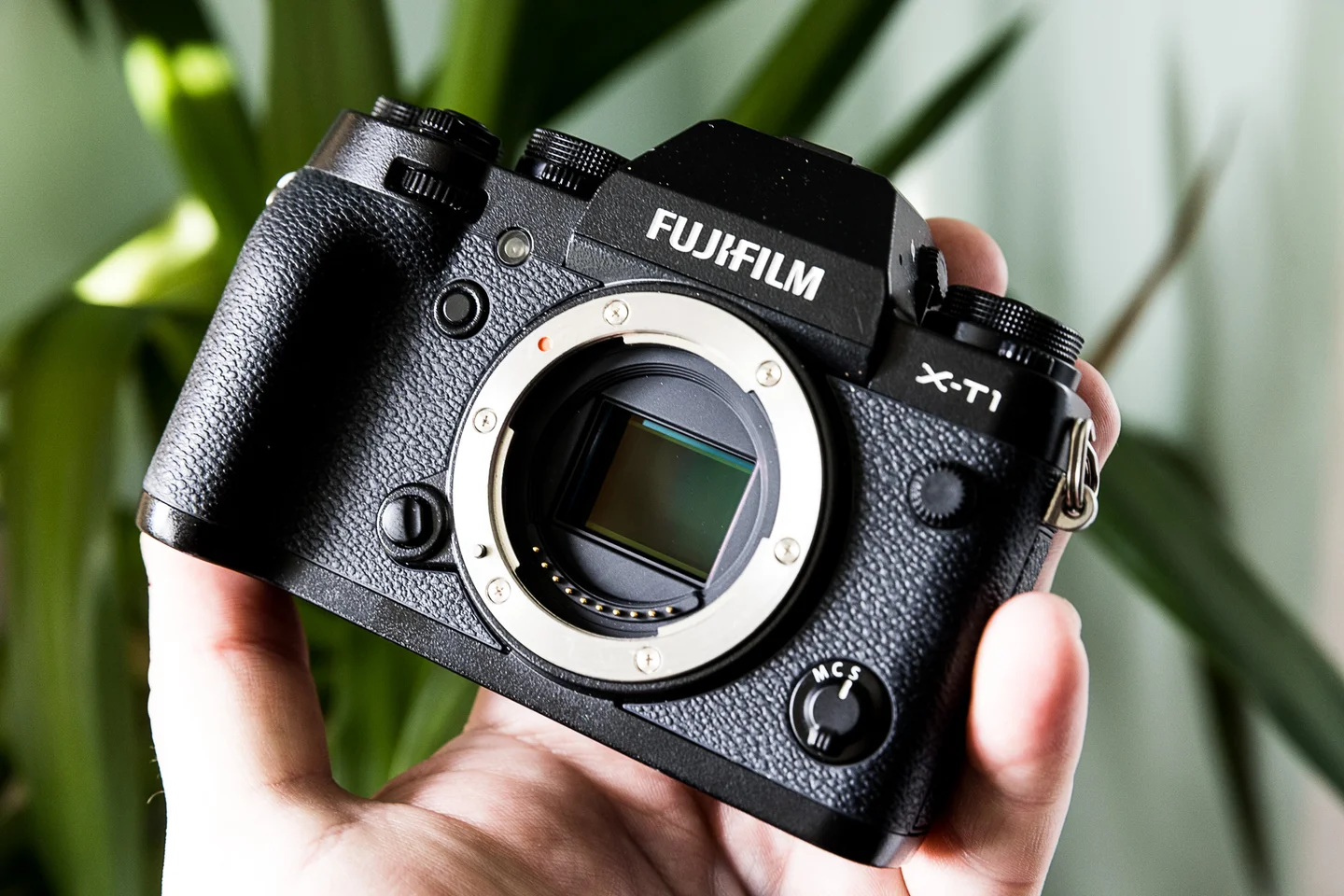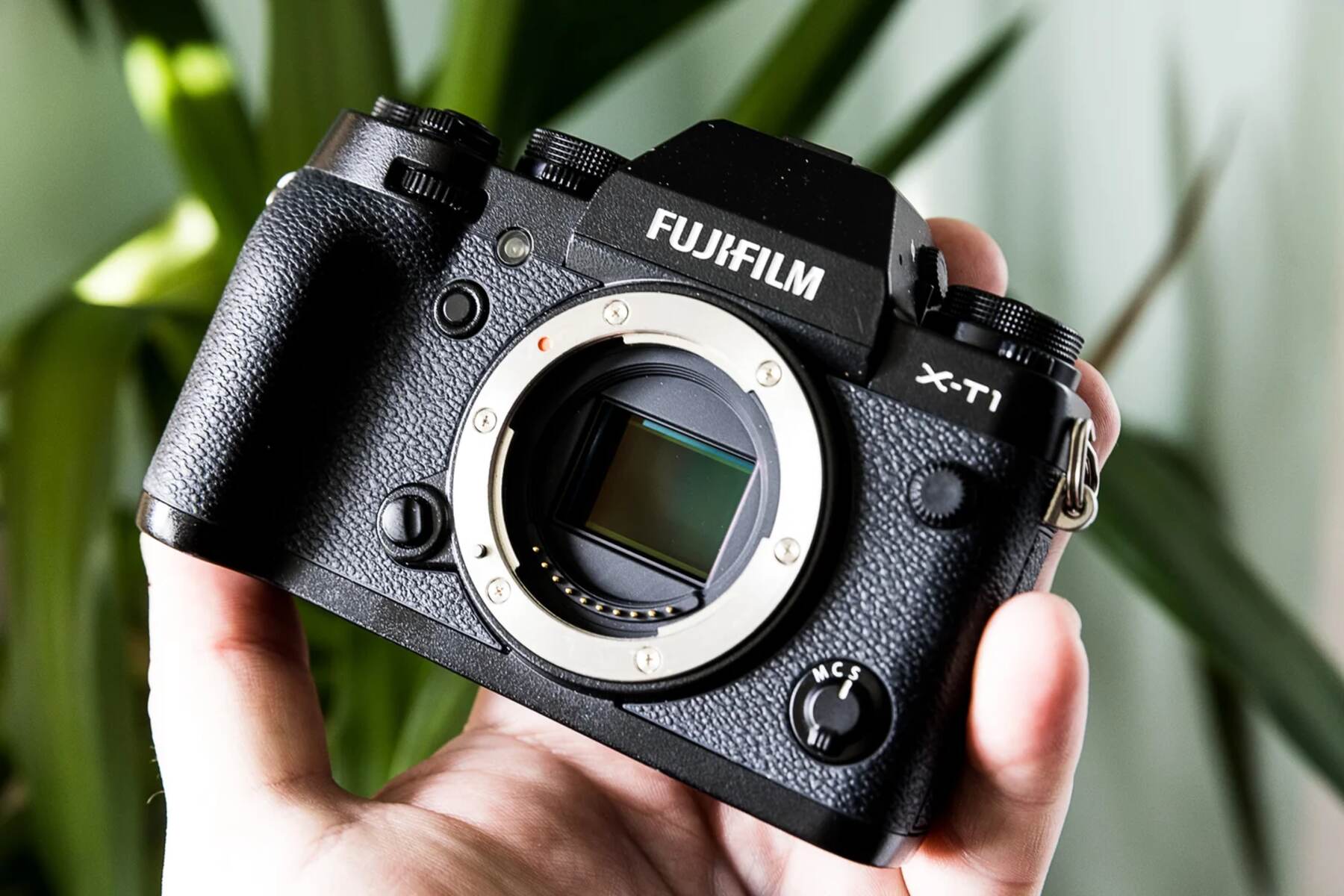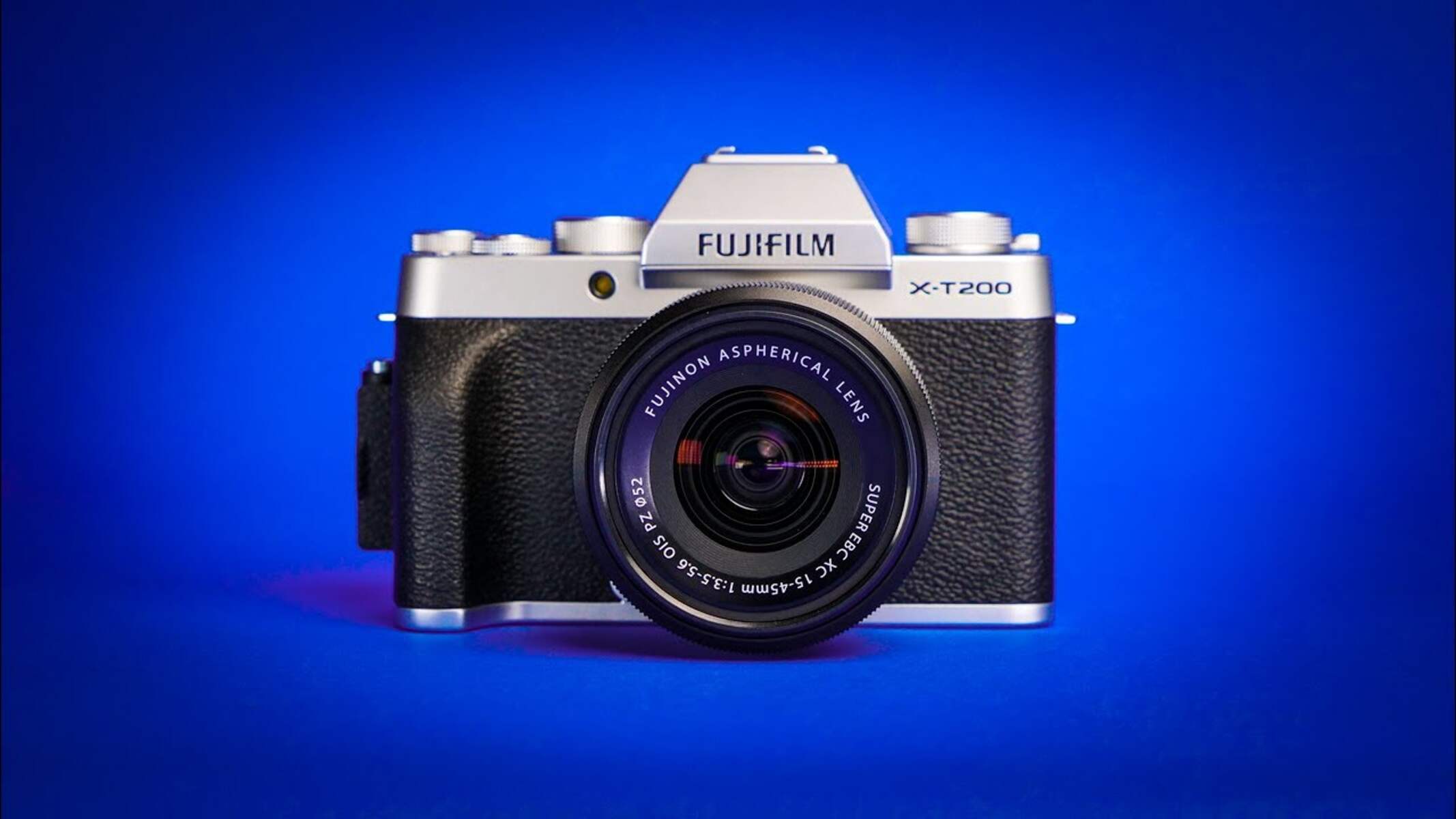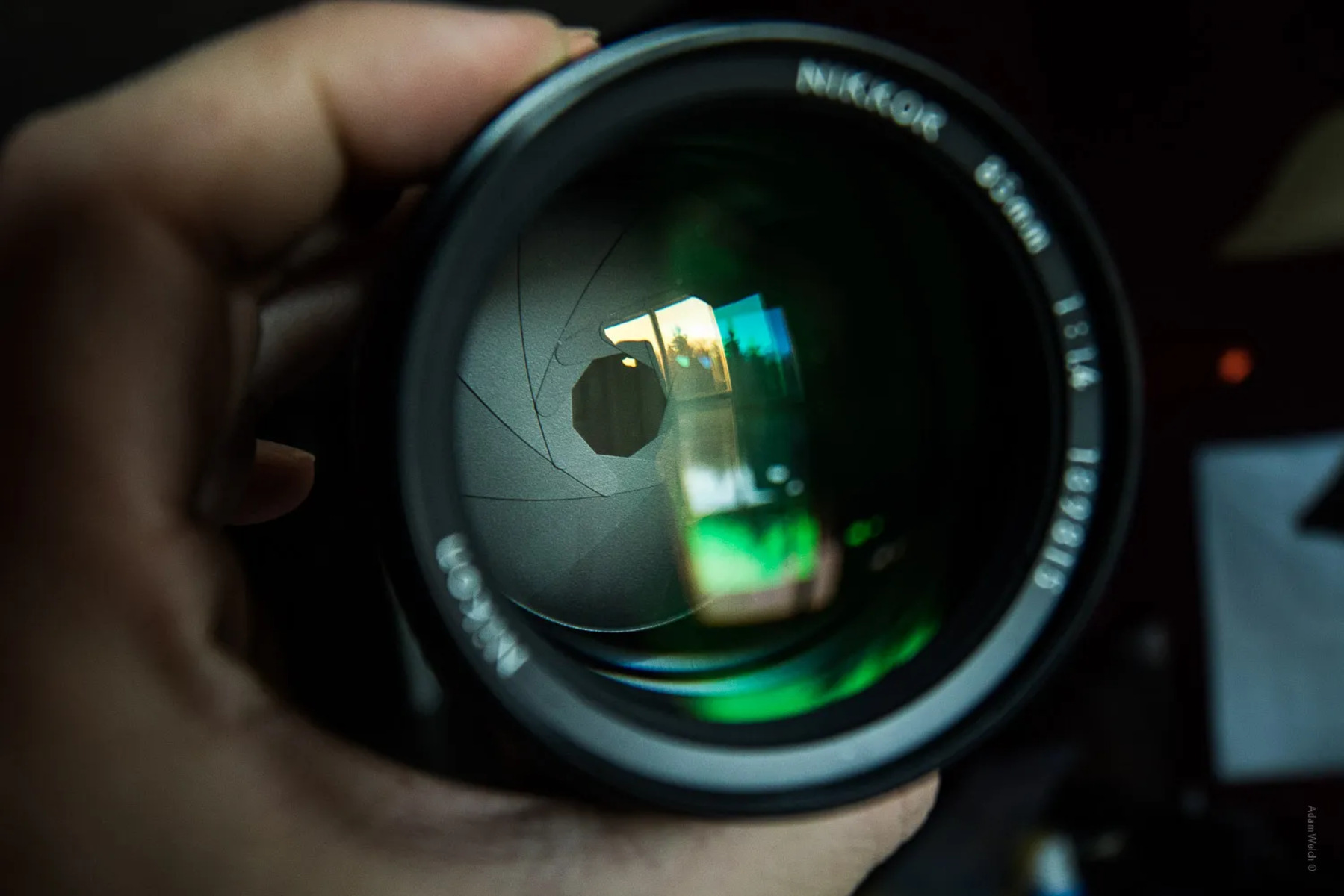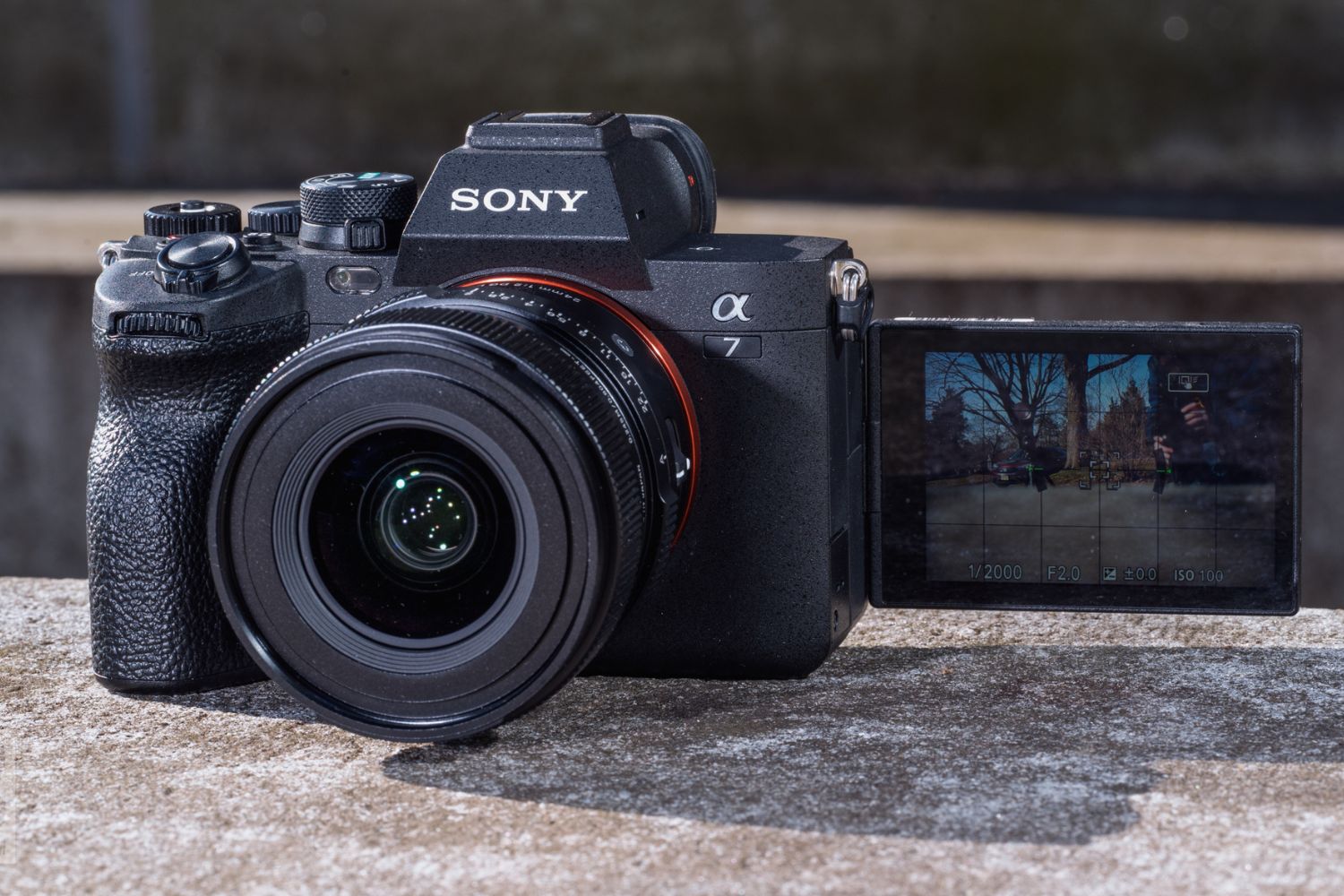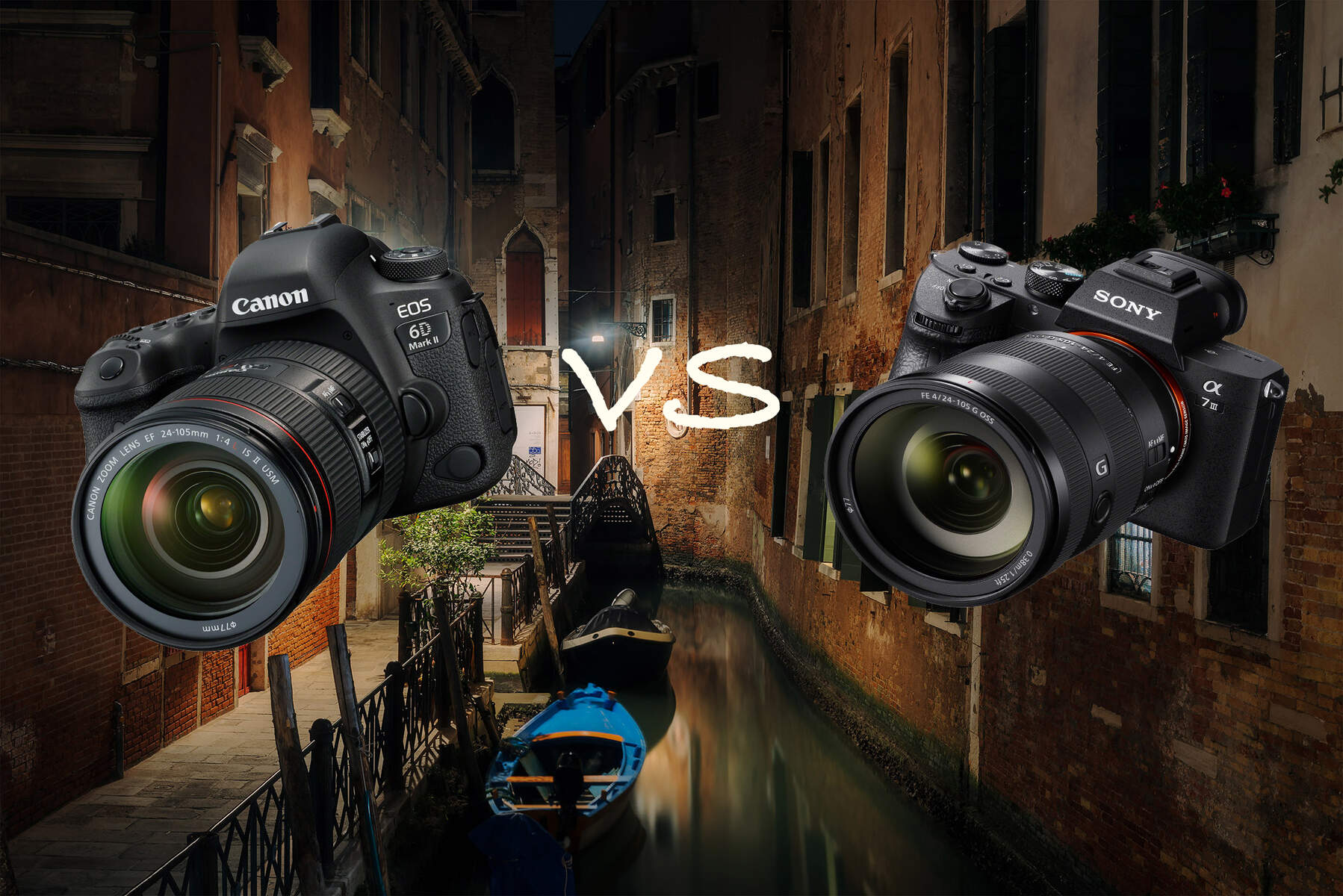Introduction
When it comes to mirrorless cameras, one of the key components that greatly influences image quality and performance is the image sensor. The sensor serves as the digital equivalent of film in traditional cameras, capturing light and converting it into an electronic signal to produce the final image. Mirrorless cameras primarily utilize two types of sensors: CMOS (Complementary Metal-Oxide-Semiconductor) and CCD (Charge-Coupled Device). Both sensor types have distinct characteristics and play a pivotal role in determining the camera's overall imaging capabilities.
Understanding the differences between these two sensor technologies is crucial for photographers and enthusiasts seeking to make an informed decision when investing in a mirrorless camera. Each sensor type has its own set of advantages and limitations, impacting factors such as image quality, low-light performance, power consumption, and overall camera functionality. By delving into the intricacies of CMOS and CCD sensors, individuals can gain valuable insights into the inner workings of mirrorless cameras, empowering them to select the most suitable option based on their specific photographic needs and preferences.
In this comprehensive exploration, we will dissect the intricacies of CMOS and CCD sensors, shedding light on their respective benefits and drawbacks. By the end of this journey, you will have a deeper understanding of the pivotal role that sensor technology plays in the realm of mirrorless cameras, enabling you to make informed choices and capture breathtaking moments with confidence. Let's embark on this illuminating exploration of CMOS and CCD sensors, unraveling the mysteries behind these fundamental components of modern mirrorless cameras.
CMOS Sensor
The CMOS (Complementary Metal-Oxide-Semiconductor) sensor is the most prevalent type of image sensor used in modern mirrorless cameras. This sensor technology operates by converting light into electrical signals, which are then processed to produce digital images. CMOS sensors are composed of individual pixels that capture light and convert it into electronic signals, offering a high degree of flexibility and efficiency in image capture.
One of the key distinguishing features of CMOS sensors is their ability to integrate additional circuitry within each pixel, enabling advanced functionalities such as on-chip noise reduction, analog-to-digital conversion, and image processing. This integration of circuitry within the sensor structure contributes to improved power efficiency and faster data readout, resulting in enhanced overall camera performance.
CMOS sensors are known for their exceptional low-light performance, making them well-suited for capturing high-quality images in challenging lighting conditions. The individual pixels on a CMOS sensor can be made larger to capture more light, thereby enhancing the sensor’s sensitivity and reducing image noise. This attribute is particularly advantageous for photographers who frequently work in dimly lit environments or capture nighttime scenes.
Furthermore, CMOS sensors offer the benefit of lower power consumption compared to their CCD counterparts. This efficiency is attributed to the ability of CMOS sensors to read data from individual pixels independently, allowing for selective activation and deactivation of specific sensor elements. As a result, mirrorless cameras equipped with CMOS sensors can deliver extended battery life and prolonged shooting sessions, making them ideal for on-the-go photography and videography.
Moreover, the inherent design flexibility of CMOS sensors enables the implementation of advanced features such as high-speed continuous shooting, video recording capabilities, and on-sensor phase-detection autofocus systems. These features contribute to the overall versatility and performance of mirrorless cameras, allowing photographers to capture fast-moving subjects with precision and clarity.
With their remarkable low-light performance, power efficiency, and integrated functionality, CMOS sensors have become the cornerstone of modern mirrorless cameras, underpinning their ability to deliver stunning imagery and exceptional versatility in diverse shooting scenarios.
Benefits of CMOS Sensor
CMOS (Complementary Metal-Oxide-Semiconductor) sensors offer a myriad of advantages that contribute to their widespread adoption in mirrorless cameras and other imaging devices. These benefits encompass key aspects of image quality, performance, and functionality, making CMOS sensors highly desirable for photographers and videographers seeking superior imaging capabilities.
- Low-Light Performance: CMOS sensors excel in capturing high-quality images in low-light conditions, thanks to their enhanced sensitivity to light. This attribute allows photographers to achieve remarkable results when shooting in dimly lit environments, such as indoor settings or nighttime scenes. The ability of CMOS sensors to capture clear and detailed images in challenging lighting scenarios is a significant advantage for professionals and enthusiasts alike.
- Power Efficiency: One of the notable advantages of CMOS sensors is their low power consumption. By enabling selective activation and deactivation of individual sensor elements, CMOS technology facilitates extended battery life in mirrorless cameras. This efficiency is particularly beneficial for photographers embarking on extended shooting sessions or capturing events where power sources may be limited.
- Integrated Functionality: CMOS sensors integrate advanced circuitry within each pixel, enabling on-chip noise reduction, analog-to-digital conversion, and image processing. This integrated functionality contributes to improved overall camera performance, allowing for faster data readout, enhanced image processing, and efficient utilization of the sensor’s capabilities.
- Versatility and Flexibility: The design flexibility of CMOS sensors enables the implementation of advanced features such as high-speed continuous shooting, video recording capabilities, and on-sensor phase-detection autofocus systems. This versatility empowers photographers to capture a diverse range of subjects and scenes with precision, speed, and exceptional image quality.
- Enhanced Image Quality: CMOS sensors facilitate the capture of high-resolution images with exceptional detail and dynamic range. The ability to produce sharp, vibrant images with minimal noise contributes to the overall appeal of CMOS-equipped mirrorless cameras, catering to the discerning requirements of professional photographers and enthusiasts.
These inherent benefits position CMOS sensors as indispensable components of mirrorless cameras, elevating the imaging experience and enabling photographers to unleash their creativity with confidence and precision.
Drawbacks of CMOS Sensor
While CMOS (Complementary Metal-Oxide-Semiconductor) sensors offer a multitude of advantages, they are not without limitations. It is essential for photographers and enthusiasts to be aware of these drawbacks to make informed decisions when selecting a mirrorless camera equipped with a CMOS sensor. Understanding the potential limitations of CMOS technology provides valuable insights into its practical implications and helps individuals assess its suitability for their specific photographic needs.
- Image Noise at High ISO: Despite their impressive low-light performance, CMOS sensors may exhibit increased image noise at higher ISO settings, especially in comparison to CCD sensors. This can impact the overall image quality, particularly in low-light conditions where higher ISO values are often necessary. Photographers may need to employ noise reduction techniques in post-processing to mitigate this effect.
- Rolling Shutter Effect: CMOS sensors are susceptible to the rolling shutter effect, which can manifest as distorted or skewed images when capturing fast-moving subjects or during rapid panning. This effect may pose challenges in scenarios where precise rendering of moving subjects is crucial, such as sports photography or videography.
- Dynamic Range Limitations: While CMOS sensors offer impressive image quality, they may have limitations in capturing a wide dynamic range, particularly in high-contrast scenes. This can result in loss of detail in highlight and shadow areas, necessitating careful exposure management and post-processing techniques to optimize image quality.
- Complex Manufacturing Process: The manufacturing process of CMOS sensors involves intricate technologies and precision engineering, which can contribute to higher production costs. This aspect may influence the pricing of mirrorless cameras equipped with CMOS sensors, potentially impacting their accessibility to certain segments of the photography community.
- Potential for Rolling Shutter Artifacts: In video recording, CMOS sensors may exhibit rolling shutter artifacts, leading to visual distortions during rapid motion or panning. This can affect the overall video quality, requiring additional stabilization measures or specialized equipment to mitigate the impact of rolling shutter artifacts.
By acknowledging these drawbacks, photographers can make informed decisions when evaluating the suitability of CMOS-equipped mirrorless cameras for their specific photographic endeavors. Understanding the practical implications of these limitations empowers individuals to leverage the strengths of CMOS sensors while addressing potential challenges through strategic shooting techniques and post-processing workflows.
CCD Sensor
CCD (Charge-Coupled Device) sensors represent an alternative sensor technology utilized in certain mirrorless cameras, offering distinct characteristics that differentiate them from CMOS sensors. CCD sensors operate by capturing light and converting it into electrical charge, which is then transferred and read out to produce the final image. While less prevalent in modern mirrorless camera designs compared to CMOS sensors, CCD technology presents unique attributes that cater to specific imaging requirements and preferences.
One of the notable features of CCD sensors is their capability to deliver high-quality images with impressive color accuracy and minimal noise. This attribute makes CCD sensors well-suited for applications where precise color reproduction and fine image detail are paramount, such as studio photography, portraiture, and specialized imaging tasks that demand uncompromising image fidelity.
CCD sensors are renowned for their exceptional dynamic range, allowing them to capture a wide spectrum of tonal values and maintain detail in both highlight and shadow areas. This attribute contributes to the sensor’s ability to produce images with rich, nuanced gradations and subtle tonal transitions, catering to the discerning requirements of photographers who prioritize image quality and tonal precision.
Furthermore, CCD sensors exhibit a global shutter mechanism, which enables simultaneous exposure of all pixels across the sensor. This feature eliminates the rolling shutter effect commonly associated with CMOS sensors, ensuring that fast-moving subjects are rendered with exceptional clarity and minimal distortion. The global shutter functionality of CCD sensors is particularly advantageous in scenarios where precise rendering of motion and rapid subject movement is crucial, such as commercial photography and videography.
While CCD sensors offer compelling advantages in terms of image quality, color accuracy, and global shutter performance, they may present limitations in areas such as power consumption, speed of operation, and integrated functionality. As a result, the utilization of CCD sensors in mirrorless cameras is often tailored to specific photographic niches and applications where their unique attributes align with the desired imaging outcomes.
Benefits of CCD Sensor
CCD (Charge-Coupled Device) sensors offer a range of compelling benefits that distinguish them as viable alternatives to CMOS sensors in the realm of mirrorless cameras. These advantages encompass critical aspects of image quality, color fidelity, and operational functionality, positioning CCD sensors as valuable tools for photographers and imaging professionals seeking specific imaging attributes.
- Color Accuracy and Image Fidelity: CCD sensors are renowned for their ability to deliver exceptional color accuracy and precise image fidelity. This attribute makes them well-suited for applications where faithful color reproduction and fine image detail are paramount, such as studio photography, product imaging, and fine art documentation. The ability of CCD sensors to capture nuanced color variations and subtle tonal gradations contributes to their appeal in specialized imaging tasks.
- Global Shutter Functionality: CCD sensors feature a global shutter mechanism, enabling simultaneous exposure of all pixels across the sensor. This eliminates the rolling shutter effect commonly associated with CMOS sensors, ensuring that fast-moving subjects are rendered with exceptional clarity and minimal distortion. The global shutter functionality of CCD sensors is particularly advantageous in scenarios where precise rendering of motion and rapid subject movement is crucial, such as commercial photography and videography.
- Exceptional Dynamic Range: CCD sensors exhibit impressive dynamic range capabilities, allowing them to capture a wide spectrum of tonal values and maintain detail in both highlight and shadow areas. This attribute contributes to the sensor’s ability to produce images with rich, nuanced gradations and subtle tonal transitions, catering to the discerning requirements of photographers who prioritize image quality and tonal precision.
- Minimal Image Noise: CCD sensors are characterized by their ability to produce images with minimal noise, especially at lower ISO settings. This attribute contributes to the sensor’s suitability for applications where low-noise imaging is essential, such as scientific imaging, astrophotography, and high-precision documentation tasks.
- Specialized Imaging Applications: The unique attributes of CCD sensors position them as valuable tools for specialized imaging applications that demand uncompromising image quality, color accuracy, and global shutter performance. From industrial inspection and scientific imaging to fine art documentation and heritage preservation, CCD sensors cater to diverse imaging niches with their exceptional imaging capabilities.
The inherent benefits of CCD sensors underscore their relevance in specific imaging contexts, offering photographers and imaging professionals a compelling alternative to CMOS sensors for applications that prioritize color fidelity, dynamic range, and precise image rendering.
Drawbacks of CCD Sensor
While CCD (Charge-Coupled Device) sensors offer compelling advantages in specific imaging contexts, they are accompanied by certain limitations that warrant consideration when evaluating their suitability for diverse photographic applications. Understanding the potential drawbacks of CCD sensor technology provides valuable insights into its practical implications and aids photographers and imaging professionals in making informed decisions regarding the selection of sensor technology for their specific imaging needs.
- Power Consumption: CCD sensors are known for their relatively higher power consumption compared to CMOS sensors. This aspect can impact the overall battery life and operational efficiency of mirrorless cameras equipped with CCD sensors, particularly in situations where extended shooting sessions or portable, on-the-go photography is a priority.
- Speed and Operational Flexibility: CCD sensors may exhibit limitations in terms of operational speed and flexibility, especially in applications that require high-speed continuous shooting, rapid data readout, and integrated on-sensor functionalities. The inherent design of CCD sensors may pose challenges in meeting the demands of dynamic shooting scenarios and real-time imaging requirements.
- Manufacturing Complexity and Cost: The manufacturing process of CCD sensors involves intricate technologies and precision engineering, contributing to higher production costs and potential pricing implications for mirrorless cameras equipped with CCD sensors. This aspect may influence the accessibility of CCD sensor technology to certain segments of the photography community and impact the overall affordability of imaging solutions.
- Size and Form Factor: CCD sensors tend to be larger in size compared to CMOS sensors, which can influence the design and form factor of mirrorless cameras. The physical dimensions of CCD sensors may present challenges in compact camera designs and lightweight, portable imaging solutions, impacting the overall ergonomics and portability of the camera system.
- Limitations in Integrated Functionality: CCD sensors may exhibit constraints in integrating advanced on-sensor functionalities, such as on-chip noise reduction, analog-to-digital conversion, and specialized imaging features. This can impact the overall performance and versatility of mirrorless cameras equipped with CCD sensors, especially in applications that demand integrated imaging capabilities.
By recognizing these limitations, photographers and imaging professionals can make informed decisions when assessing the suitability of CCD-equipped mirrorless cameras for their specific photographic endeavors. Understanding the practical implications of these drawbacks enables individuals to leverage the strengths of CCD sensors while addressing potential challenges through strategic workflow considerations and tailored shooting techniques.
Which Sensor is Better for Mirrorless Cameras?
The question of which sensor type is better for mirrorless cameras hinges on a multitude of factors, including the specific imaging requirements, shooting scenarios, and preferences of photographers and imaging professionals. Both CMOS (Complementary Metal-Oxide-Semiconductor) and CCD (Charge-Coupled Device) sensors offer distinct advantages and limitations, catering to diverse photographic niches and applications.
For many modern mirrorless cameras, CMOS sensors have emerged as the predominant sensor technology due to their versatility, efficiency, and advanced imaging capabilities. The inherent benefits of CMOS sensors, such as exceptional low-light performance, power efficiency, integrated functionality, and high-speed operation, make them well-suited for a wide range of photographic applications, including everyday photography, videography, and dynamic shooting scenarios.
CCD sensors, while less prevalent in contemporary mirrorless camera designs, excel in specific imaging contexts that prioritize color accuracy, dynamic range, and global shutter performance. Their ability to deliver exceptional image fidelity, precise color reproduction, and minimal noise makes them valuable tools for applications such as studio photography, fine art documentation, and specialized imaging tasks that demand uncompromising image quality.
When determining the suitability of sensor types for mirrorless cameras, photographers should consider the following factors:
- Imaging Requirements: Assess the specific imaging attributes and performance characteristics required for the intended photographic applications, such as low-light performance, color accuracy, dynamic range, and operational flexibility.
- Shooting Scenarios: Consider the types of shooting scenarios and subjects commonly encountered, including low-light environments, fast-moving subjects, studio settings, and specialized imaging tasks that demand precise color reproduction and image fidelity.
- Operational Efficiency: Evaluate the importance of factors such as power consumption, speed of operation, integrated functionality, and overall camera performance in relation to the intended photographic workflows and shooting preferences.
- Cost Considerations: Factor in the cost implications associated with sensor technology, including the pricing of mirrorless cameras equipped with CMOS or CCD sensors, as well as the potential investment in supplementary equipment and accessories.
Ultimately, the decision regarding which sensor type is better for mirrorless cameras is contingent upon the alignment of sensor attributes with the specific imaging goals, shooting preferences, and operational requirements of photographers and imaging professionals. By carefully evaluating the strengths and limitations of CMOS and CCD sensors in relation to their unique photographic needs, individuals can make informed choices that enhance their imaging capabilities and elevate their creative pursuits.
Conclusion
The realm of mirrorless cameras is enriched by the diverse array of sensor technologies available, each offering distinct advantages and limitations that cater to specific imaging requirements and shooting scenarios. The exploration of CMOS (Complementary Metal-Oxide-Semiconductor) and CCD (Charge-Coupled Device) sensors has illuminated the pivotal role of sensor technology in shaping the imaging capabilities and performance of mirrorless cameras.
CMOS sensors have emerged as the cornerstone of modern mirrorless cameras, leveraging their versatility, efficiency, and advanced imaging capabilities to deliver exceptional performance in diverse photographic applications. Their remarkable low-light performance, power efficiency, integrated functionality, and high-speed operation position CMOS sensors as invaluable assets for photographers and videographers seeking imaging solutions that excel in dynamic shooting scenarios and everyday photographic endeavors.
On the other hand, CCD sensors, with their emphasis on color accuracy, dynamic range, and global shutter performance, present compelling advantages for specialized imaging tasks that demand uncompromising image quality and precise color reproduction. While less prevalent in contemporary mirrorless camera designs, CCD sensors continue to serve as valuable tools for applications such as studio photography, fine art documentation, and specialized imaging niches.
As photographers and imaging professionals navigate the landscape of sensor technology in mirrorless cameras, the decision regarding the most suitable sensor type is contingent upon a nuanced understanding of their specific imaging requirements, shooting scenarios, and operational preferences. By carefully evaluating the strengths and limitations of CMOS and CCD sensors in relation to their unique photographic needs, individuals can make informed choices that elevate their imaging capabilities and empower their creative pursuits.
Ultimately, the coexistence of CMOS and CCD sensor technologies in the realm of mirrorless cameras underscores the diversity and adaptability of imaging solutions, offering photographers a spectrum of choices to align with their creative vision and photographic endeavors. The ongoing evolution of sensor technology continues to shape the landscape of mirrorless cameras, enriching the imaging experience and empowering photographers to capture the world with precision, creativity, and unparalleled visual expression.







